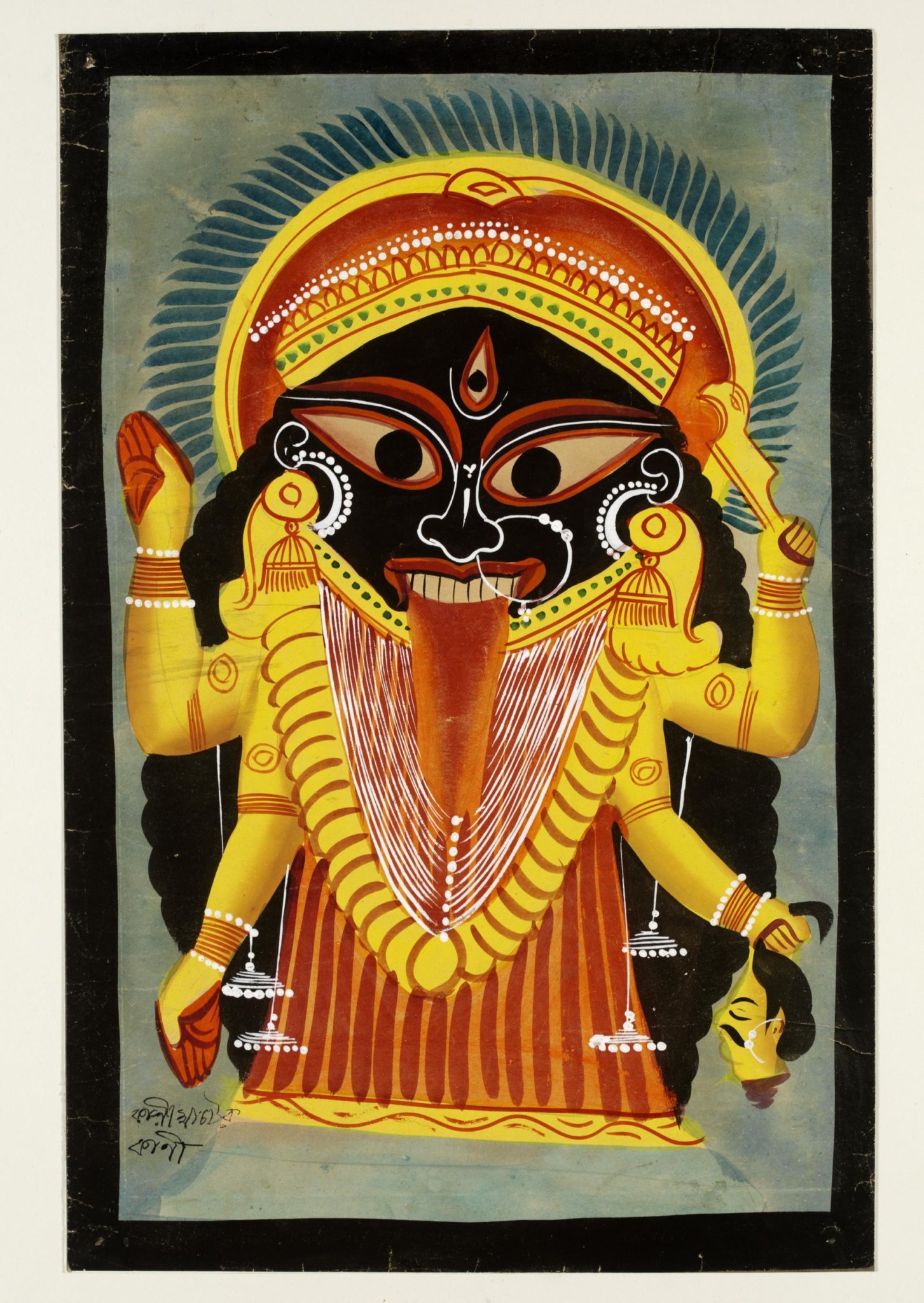
Souvenir Art The Divine Comedy of Calcutta’s Kalighat Paintings Sarmaya
12 likes, 0 comments - indigenousarts.foundation on July 26, 2023: "Kalighat painting is a style of Indian folk art that originated in the Kalighat region of West Be." Indigenous Arts Foundation on Instagram: "Kalighat painting is a style of Indian folk art that originated in the Kalighat region of West Bengal, India, during the 19th century.

Kalighat Painting Indian folk art, Kalighat paintings, Indian paintings
Kalighat painting or Kalighat Pat originated in the 19th century in West Bengal, India, in the vicinity of Kalighat Kali Temple , Kalighat , Calcutta, India. From being items of souvenir taken by the visitors to the Kali temple, the paintings over a period of time have developed as a distinct school of Indian painting.
ParsaReport Kalighat paintings confusing conjunction of old and new
1. Oriental- Oriental Kalighat Paintings depict the Gods and Goddesses and their stories. These include Ram and Sita, Krishna and Radha, Lakshmi, Durga, Shiv-Parvati and many more. 2.

Kalighat Painting by artist Unknown Artist Folk, Painting Mojarto 190982
That's when I decided to learn more about the art form and revive it," Kalam says. More here: Warli painting: Maharashtra's 10th-century tribal folk art moves from mud walls to modern living rooms. Revival and contemporisation of Kalighat paintings. Kalam began by observing the old Kalighat paintings in museums and people's homes.

Kalighat Painting by artist Unknown Artist Folk, Painting Mojarto 217868
Kalighat 'patuas' (painters) produced these cheaply made works of art to make a living by selling to a mass market. The V&A holds the largest collection of Kalighat paintings in the world. The collection, which numbers about 645 watercolour drawings and paintings, also includes line drawings and hand-coloured lithographs.

Kalighat Painting A Hugedemanded Artwork in West Bengal Indian art gallery, Indian art
Kalighat painting, Kalighat Patachitra, or Kalighat Pat (Bengali: কালীঘাট পটচিত্র) is style of Indian paintings which originated in the 19th century.

Kalighat Painting by artist Unknown Artist Folk, Painting Mojarto 265076
In the process, the innovative Kalighat painters, transforming folk art into a popular genre, offered scathing portrayals of the many societal changes of the day. By the end of the 19th century, mass production combined with industrialization meant that block prints, lithographs, and oleographs replaced hand-drawn images, and their style.

Pin on ANTIQUITY REIMAGINE TIMELESS CLASSICS
Mythology and Religion In villages, the patachitra form was creating a dynamic oral tradition, aided by visual art. The subjects of the scrolls were mostly religious in nature where both Hindu and Muslim tales were depicted, the most famous being parts of Ramayana and stories on the lives of popular Islamic saints.[5]

Kalighat paintings separate sheets India art, Hindu art, Folk art painting
In the process, the innovative Kalighat painters, transforming folk art into a popular genre, could offer scathing portrayals of the changes they observed in 19th-century colonial Bengal. By 1900 their style changed drastically; mass production, combined with industrialization, meant that hand-drawn images were replaced by block prints.

Kalighat paintings separate sheets Indian folk art, Hindu art, Digital art fantasy
Kalighat paintings, as the name suggests, were created in the Kali Temple area on the ghat (bank) of the Burin Ganga (a canal diverging from the Ganges River) in south Calcutta (Figs. 1, 3). From at least as early as the 1830s until the 1930s, the images were painted and sold as pilgrimage and tourist souvenirs, not only in the shops and stalls lining the alleys of the Kalighat area but also.

Kalighat paintings from Bengal, India Indian folk art, Indian art paintings, Hindu art
Traditional Folk Art: Kalighat Pat Paintings The Kalighat pat painting style originated in rural Bengal. In the rural villages, skilled artists used to paint narrative stories on scrolls of handmade paper, which stretched over 20 ft. (6 m) in length and were known as patachitras.

Daily Life in a Village Kalighat Painting Contemporary folk art, Kalighat painting, Indian
Kalighat painting is a traditional Indian form of art that originated in the colonial atmosphere of Calcutta in the 19th century. The Kalighat Kali Temple is the birthplace of these paintings, and this traditional form of painting owes its name.

KALIGHAT Tribal art, Folk art painting, Contemporary art painting
Folk art has many forms in India but it is only in recent years that it has received its due attention. In a nation that comprises 35 states, each distinct cultural and traditional identity is displayed in the folk art of the region.. Almost a world apart are the Kalighat style of paintings which was born in the market places of Kolkata.
.jpg?mode=max&width=1025)
SEVEN KALIGHAT PAINTINGS, INDIA, BENGAL, 19TH CENTURY Christie’s
Culture Meet the greatest modernists of the Indian folk art From Bhuri Bai, a pioneering Bhil artist, to Jivya Soma Mashe, a renowned Warli modernist, these revolutionaries gave Indian folk art a contemporary canvas. By Gautami Reddy and Amit Kumar Jain 1 January 2023

KALIGHAT PAINTING Folk art painting, Indian folk art, Contemporary art painting
Kalighat painting, an extraordinary style of Indian folk art, originated in the 19th century within the vibrant Kalighat area of Kolkata (formerly Calcutta), West Bengal, India. It emerged during a period of profound social and cultural change in colonial India, and quickly gained popularity as a unique and expressive form of artistic expression.

Oxford Digital Library Kalighat paintings separate sheets Indian folk art, India art
One of the first descriptions of Kalighat paintings was by art collector Ajit Ghose: The drawing is made with one long bold sweep of the brush in which not the faintest suspicion of even a momentary indecision, not the slightest tremor, can be detected.